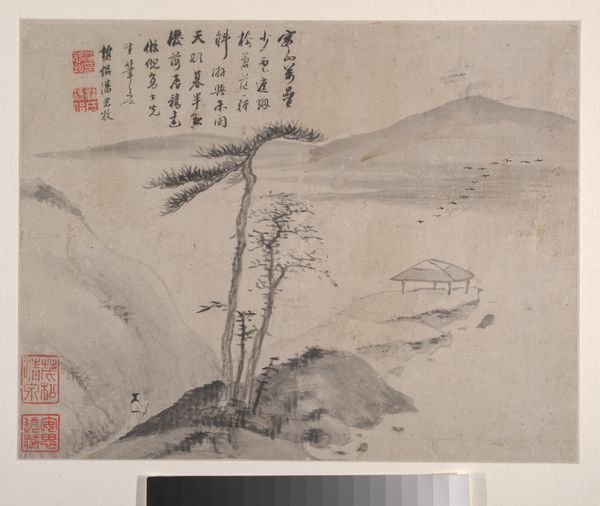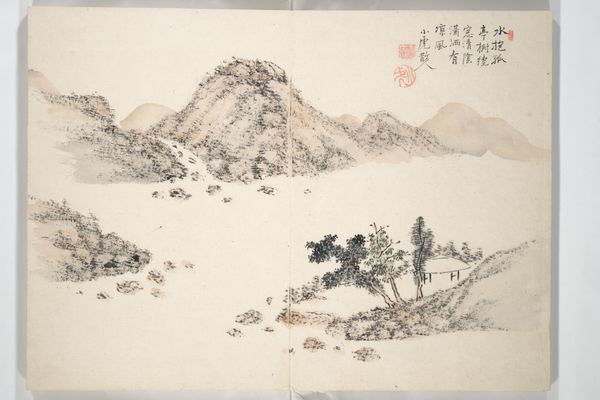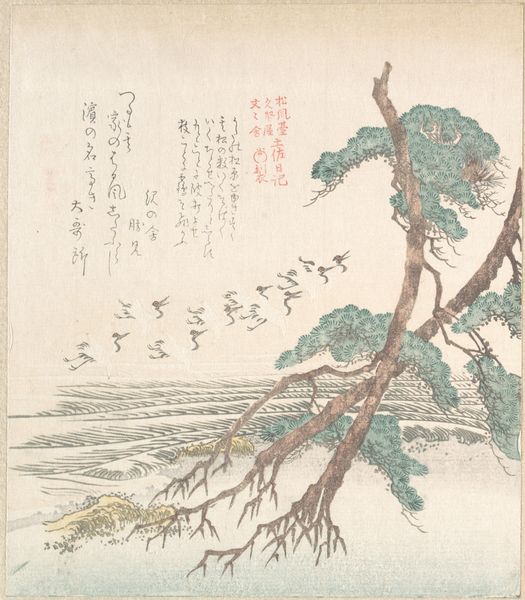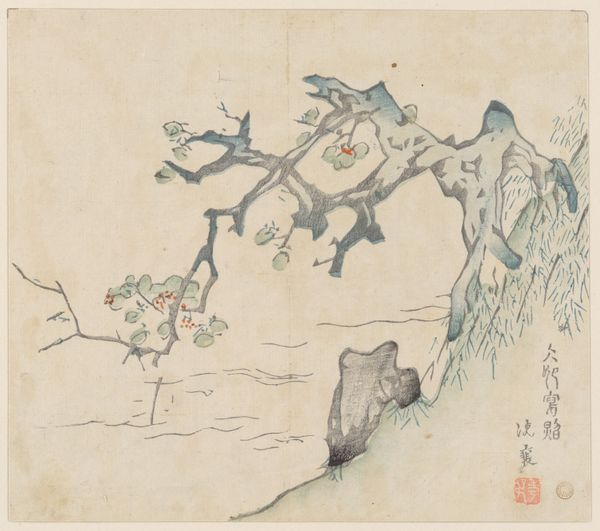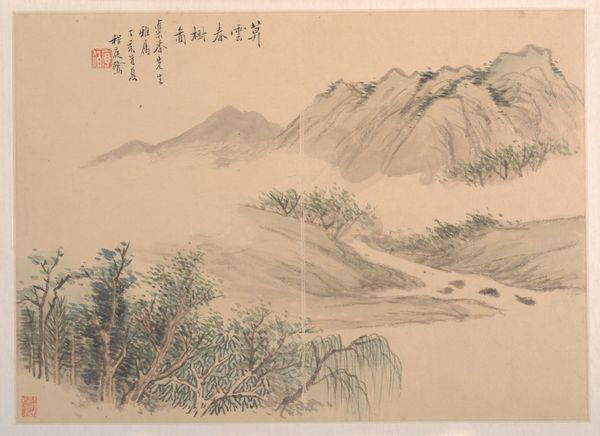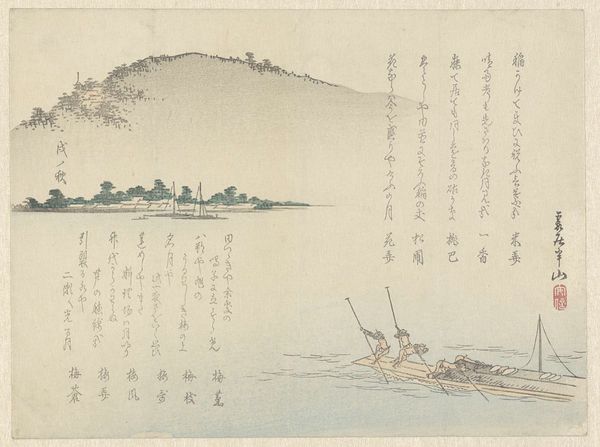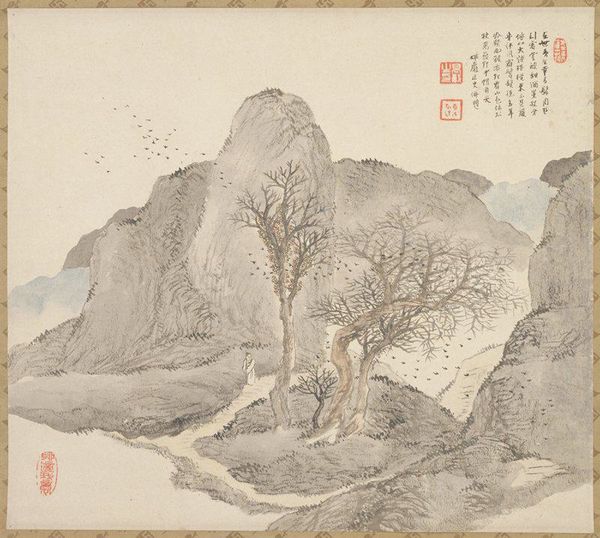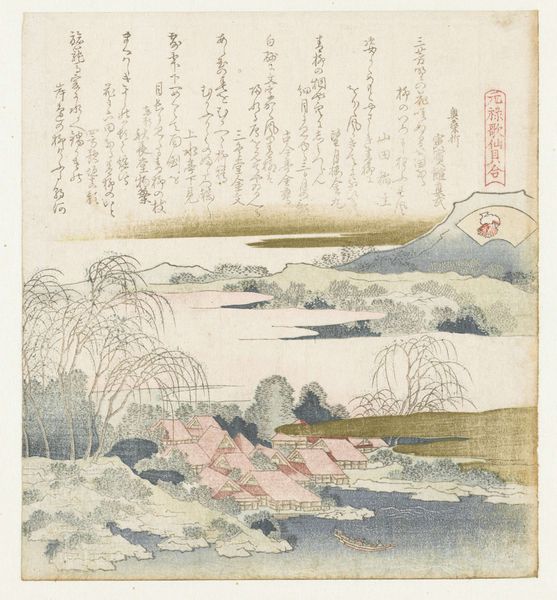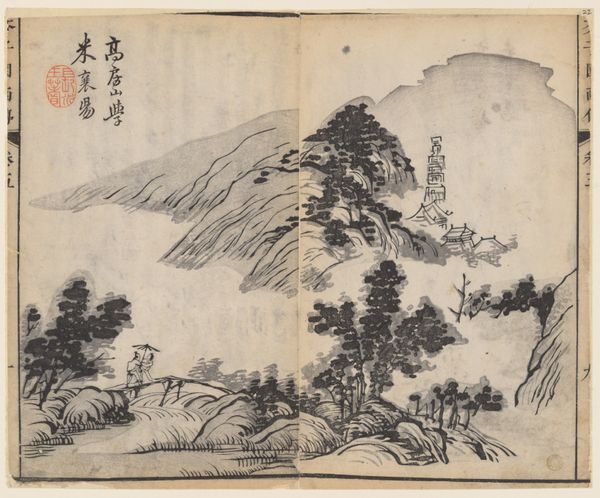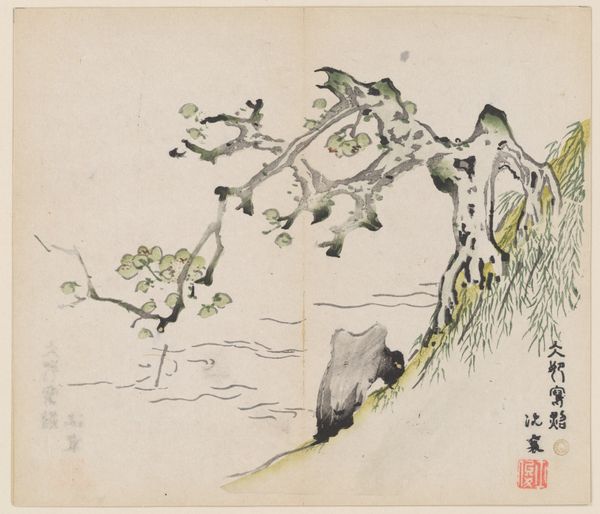
Autumn Landscape, leaf from Album for Zhou Lianggong 1654
0:00
0:00
painting, paper, watercolor, ink
#
aged paper
#
water colours
#
painting
#
asian-art
#
landscape
#
paper
#
watercolor
#
ink
#
mountain
#
china
Dimensions: 9 3/4 x 13 in. (24.8 x 33 cm)
Copyright: Public Domain
Editor: Here we have Xiang Shengmo's "Autumn Landscape, leaf from Album for Zhou Lianggong," created in 1654 using ink and watercolors on paper. There's a subtle melancholy to this piece, a sense of stillness as the seasons change, with some red, yellow, and green. What strikes you most about this work? Curator: What stands out is the integration of calligraphy, painting, and the seals. How do these elements work together to communicate meaning and who was the image designed to address? These scholar-artists were deeply embedded in socio-political networks, often creating art for a specific audience or patron like Zhou Lianggong. Editor: That's fascinating. I hadn't considered the intended audience so much. Does the style reflect the artist's relationship to the patron? Curator: Precisely! The apparent simplicity belies a sophisticated understanding of artistic tradition. Consider the use of space – the expanse of water and sky, contrasted with the detail in the foreground trees. These choices position both the artist and the educated viewer within a broader cultural conversation regarding the aesthetics of power. The seals, as well as the calligraphic text, acted as validations or responses to the artwork and contribute to its overall social and artistic function. How do you think this landscape plays into notions of scholar-official ideals during a time of dynastic transition? Editor: I see how the serene imagery offers a sense of stability amid potential societal turmoil, an idealized refuge almost. It provides both artist and viewer an avenue for discussing landscape painting traditions. Thanks for guiding me beyond my first impressions to consider historical context! Curator: It’s in understanding that context, especially around the political climate in which the work was produced and viewed, that we truly grasp its complexities. I found the reflection about how seemingly straightforward pieces held complex meanings very rewarding.
Comments
No comments
Be the first to comment and join the conversation on the ultimate creative platform.

